The project has a very profound inspiration, which is the thinking about the universe asnd life. I admire the appalling visual effect as well as the harmonious match of the graphic and the music. The graphic does follow the flow of the music and push people to think about life and the universe using their own imagination. I don’t know much about the algorithms behind but I guess the designer makes use of the music volume and tone to generate random graphic within certain logical frame, and thus what we see is well-designed but not repetitive at all. The creator’s artistic sensibilities is well shown in the dynamic movement of the grapic. The centrol idea of the universe of the designer is that it forms and reforms in an endless pattern, which is reflected in the transformation of shapes and the seeming randomness.
Category: LookingOutwards-04
Audrey Zheng-Looking Outwards-04
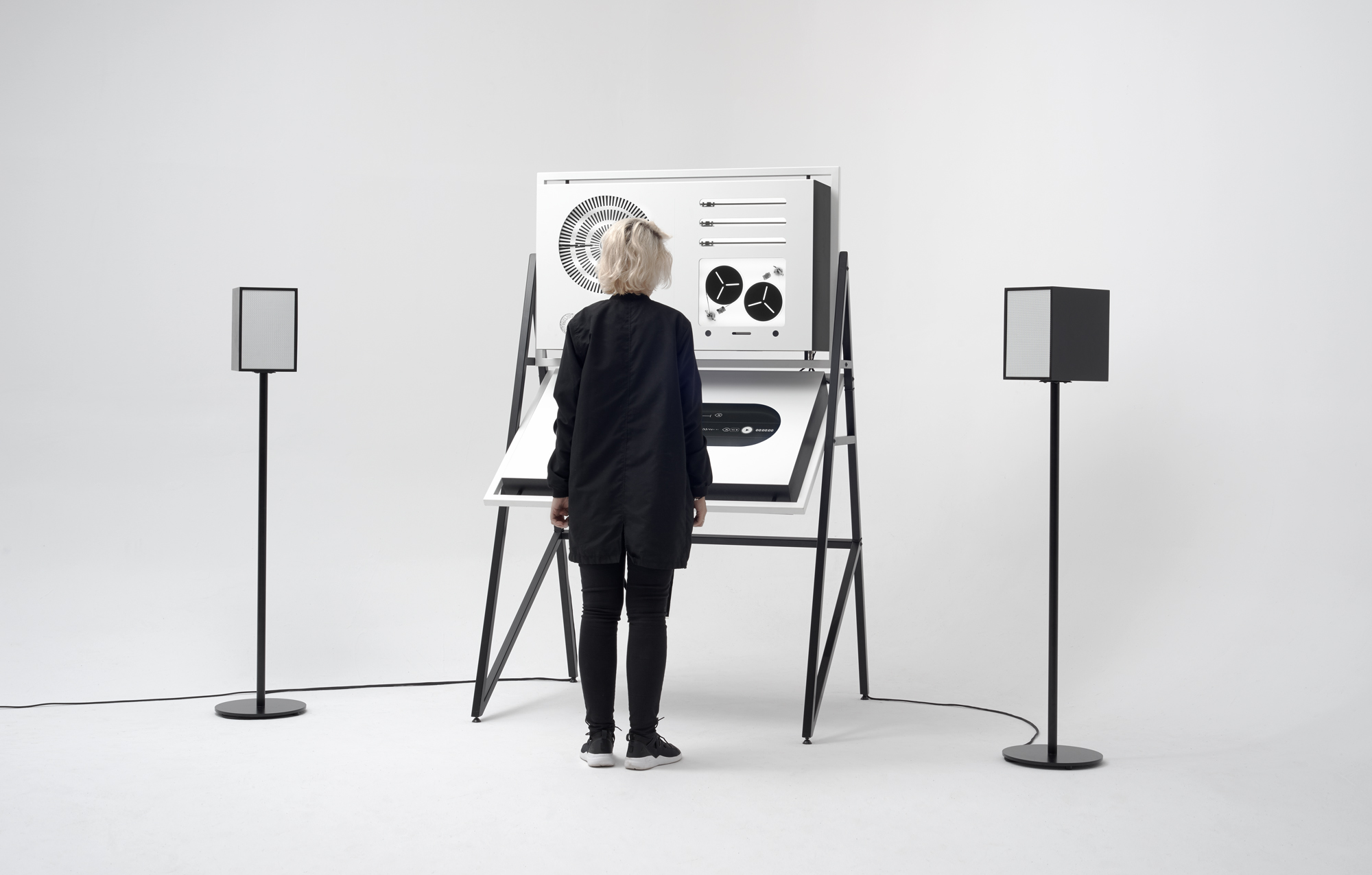
I am using 1 of my grace days for this late submission.
For this week’s Looking Outward, I chose to read up on the Apparatum, created by panGenerator. In a nutshell, the apparatum is a custom made apparatus with digital interface that emits purely analogue sound.
It’s a tribute to the Polish Radio Experimental studio. This studio recorded electronic and utility pieces. The studio was established in 1957 and operated until 2004; it was one of the first studios in the world producing electroacoustic music.
I think it’s cool how multifunctional this installation is. Apparatum is equipped with optical analog sound generators and tape samplers. It has seamless UI design and a touch screen to allow users to compose their own music.Then it print’s the user’s score and uploads the audio file.
I also admire the black and white minimalist aesthetic of the physical design. The physical form of the apparatus is inspired by the general aesthetics of the Studio’s famous “Black Room” designed by Oskar Hansen. I think it suits the tempo and range of electronic sounds the apparatum produces.
I enjoy the mixture of old technology and new technology. The new tech: Software used to create the interface/GUI is electron (node.js) and microcontroller elements are c running on teensy 3.2. The older tech: the panGenerator team decided to use two types of “tape samplers” – two 2-track loops and three one-shot linear tape samplers. To obtain noise and basic tones they are utilising purely analog optical generators based on spinning discs with graphical patterns.
See more here.
Yiran Xuan – LookingOutwards – 04
Robots can play instruments now; automatons have had the ability to do so for hundreds of years. And they can read music too; combine a scanning software with reading software, and a robot can interpret sheet music on a stand. Together, with a consistent internal tempo, instant communication, robots could be the perfect orchestral musician…if they could be led by a conductor.
Interpreting a conductor presents a few challenges and decisions. First, is how to detect the motions? Computer vision or accelerators? Also, what universal motions between many different conducting styles communicate a timing, an volume, or an emotion? Musicians, when being conducted, usually anticipate a move on part of the conductor; would robots be able to do the same? Musicians also try to keep a consistent internal tempo according to the sheet music, and adjust to the conductor once the motions become evident. Would robots be able to adjust similarly?
A similar project focused around building a program to detect and correct conducting form: https://drive.google.com/file/d/1DDeeQezbasnELFeGOyKGwGF2jq_IXTDG/view?usp=sharing
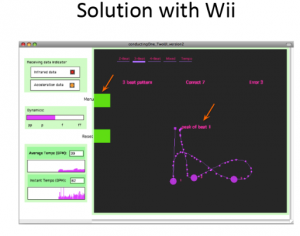
Robert Oh- Looking Outward-04

For this week’s Looking Outward, I chose to read up on the Sonic Playground, created by Yuri Suzuki Design. In a nutshell, the playground is a collection of 6 different interactive sound sculptures that carry sound waves to nearby sculptures.
I really admire this project, because one of its main goals is to introduce art to regular people walking outside. I love the fact that this playground is geared towards children, so that they are able to experience how sound waves travel and to enjoy playing outside. Personally, I have experienced a similar contraption at a science museum once that allowed people on opposite sides of a wide room to hear each other using similar sculptures. And so, I really do love the fact that a person has carried on that idea to make it accessible to the public.
The software used to develop and optimize the pieces in the sculptures was designed by Luca Dellatorre using Grasshopper which is a parametric design plug-in in Rhinoceros. The article states that Luca simulated sound wave behavior using ray tracing techniques.
Clearly, we are able to see the fun-loving, colorful side of the creator’s artistic sensibilities that show in the Sonic Playground. I am very excited for future playgrounds and public attractions like these that bring people together through science and fun!
link to the article:
Joanne Lee – Looking Outward 04
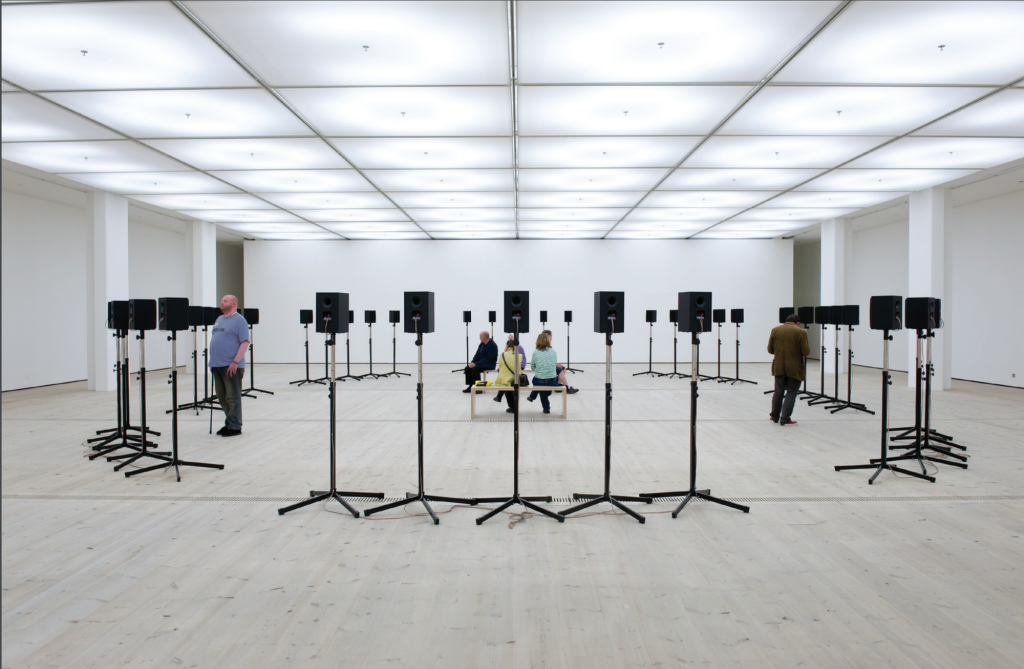
At The Scottsdale Museum of Contemporary Art, an exhibit called “The Five Senses” was displayed from Feb 1- May 4, 2014. Naturally, one of the senses that was explored was sound. Janet Cardiff’s The Forty Part Motet was displayed in an empty room on 40 speakers. The congregational choir of the Gothic Salisbury Cathedral were asked to record a choral arrangement of Thomas Tallis’s Spem in alium (The Forty Part Motet). This is an a capella piece, meaning that there is no instrumental accompaniment.
Cardiff’s installation is not only a technically complex recording, but also has many details to give a unique sensory experience. The most important is that each of the 40 speakers are synchronized to play 1 track in the recording (each singer has their own individual channel). These speakers are placed at eye level in an oval, in groups of 5 (just like in the original chorus). I really admire this installation because I love choral music. There is something unique about the way all of the voices travel to the audience and mesh together to hit you at once, and that can only be experienced live. This installation seems to emulate that experience despite using speakers by giving each voice a different speaker channel. I wish I had gotten to experience this exhibit.
A video showing a glimpse of The Forty Part Motet with a voiceover by Janet Cardiff.
Alexandra Kaplan – Looking Outwards -04
A piece of sound art that stood out to me was Lines which was created in 2016 by composer Anders Lind. The installation is a series of lines on the floor, walls, and hanging down from the ceiling that can be interacted with by the audience to make different pitched sounds. I was really drawn to how participatory the piece is, I love it when art is accessible to its audience and promotes discovery in its viewers. It is also great in how it can be a group experience with people creating music together as well as a solo one.
I would think that the algorithm for this piece would use motion sensors to determine how far away an obstruction is and to play a certain pitch/tempo per distance.

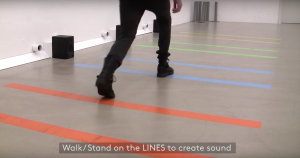
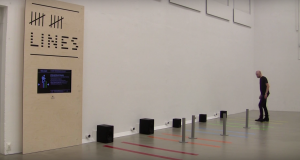
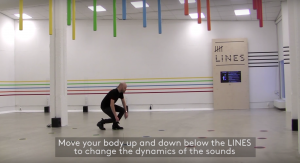
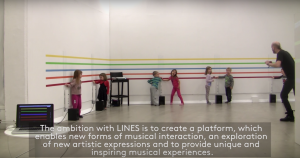
Sophie Chen – Looking Outwards – 04
Ryoji Ikeda – Data.path
video documentation of data.path installation in Madrid.
As a video & media design major, I’ve always been interested in the relationship between audio and visuals, as the relationship between the two is integral to each other’s existence and they inevitably affect how the other is perceived. Ryoji Ikeda is a Japanese artist whose creations’ embodies what audio and visual working together are like. Data.path is one of his pieces that combines video projections and the architectural environment through which the viewers move. His moving images are created using data such as computer codes, molecular structures, astronomical coordinates, etc that are synchronized with the audio, and projected on walls 20 meters long. I find his synchronization of audio and visual, digital generation of the visual content, and use of scale to immerse the audience into this synchronization to be very inspiring as it shows the power that audio-visual data has.
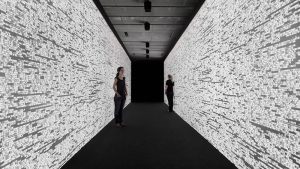
Kai Zhang-Looking Outwards-04
A 4G Network Turned into Music
Project by – Andrius Šarapovas, Technarium.
Commissioned by – Tele2.
Video by – Some Films
This is an installation that uses algorithm to turn one second of browsing on the 4G network into one second of music. The number of connections to the network in different regions of Lithuania controls the volume of the notes being played and their rhythmic distribution, while the amount of data transferred during those sessions determines the notes’ pitches.
The walk-in kinetic sound installation consists of 77 segments distributed throughout the exhibition space. Each segment has a metal bar, a sound activator, a sound damper, a resonator, and mechatronics. The distribution of the segments in space forms 4 narrow and 11 wide directions of movement. The number of segments and their positions were in part determined by the spatial and acoustic characteristics of the exhibition space. The sound range of the installation consists of 4 notes in 4 octaves where a specific note is assigned to the North, the South, the East and West of Lithuania.
What amazed me about this project is how it embraced the coldness of technology and turned it into something warm. From the sound generated, I can hear how the everlasting signals are transfered through the globe, though it’s merely taking a piece of sample from it. The tuning of algorithm and tones is rather elegant and pleasing to listen to. The listeners could also sense the richness of the patterns of data that’s been carried into this room.
Another thing to give the creator credit is their ability to deal with space. It’s a farily large space with echos. The creators took advantage of the charcteristics of it can use it as a perfect stage for the music piece. And the sound wanders around for an extended piece of time to give people a sense of tranqility. When you’re walking in the matrix of sound machines, it’s almost like you’re touching the music, and the information lies beyond that. The installation carefully used materials that matches the flow of the tones. The instrument components are exposed and showcasing its fine details and simplicity, which adds to the overall experience for the audience.
“Statistics reduces the studied object into a few, several or a dozen features. This is a paradoxical trait of statistics – investigating the variability of an object it actually produces immutable characteristics, monitoring the differences, it observes repetitions. The average, however, is not reality, but rather a color that is the result of mixed different tints. The height or weight gets summed, but the noise, the smell or shadows are lost. Statistics draw the map of reality, making it two-dimensional. The effect of music is directly contrary.”



https://courses.ideate.cmu.edu/15-104/f2018/wp-admin/post-new.php
Miranda-Luong-Looking Outwards-04
http://soundleak.org/works/sounddam
SoundDam (2011) is an aural investigation of spacial awareness by Keiko Uenishi. The installation runs along a 6km stretch of the Rio Paiva river. Children were asked to travel along the river but had to cross many invisible “sound dams” along the way. Unlike traditional dams and barriers, sound dams react to spaces and movements. I admire the idea of using sound to create a physical presence. I can only guess at what algorithms Uenishi is using to create this dynamic experience for the children. In addition to the physical presence that sound creates, the changing of the sound and adjusting to the environment around it. There is something purely breathtaking and warming about the idea that sound can be so well integrated into the environment. Uenishi writes that his installation had many “‘cross-communications’ as results from different parts of the river and the people living along it.” While the algorithms used are still a mystery to me, I feel like the applications are tremendous.
looking outward 04
The Sonumbra de Vincy, Responsive Light Emitting Environment made in 2008 was the most interesting to me. I enjoyed how the digital structure that were made out of lines were formed almost like trees with a trunk at the bottom and wider structure of branches at the top. I also admire how the artists made this structure interact with sounds around it. The Sonumbra illustrates atmosphere of rhythms going on around it bring awareness to all of the patterns and the relationship between people, cars, and other things surrounding the area. The artists worked with electro-luminescent technology a unique lace technique (Lumilace) that creates architectural scale and animates fibre bases technology through hard and software.
![[OLD FALL 2018] 15-104 • Introduction to Computing for Creative Practice](../../wp-content/uploads/2020/08/stop-banner.png)
